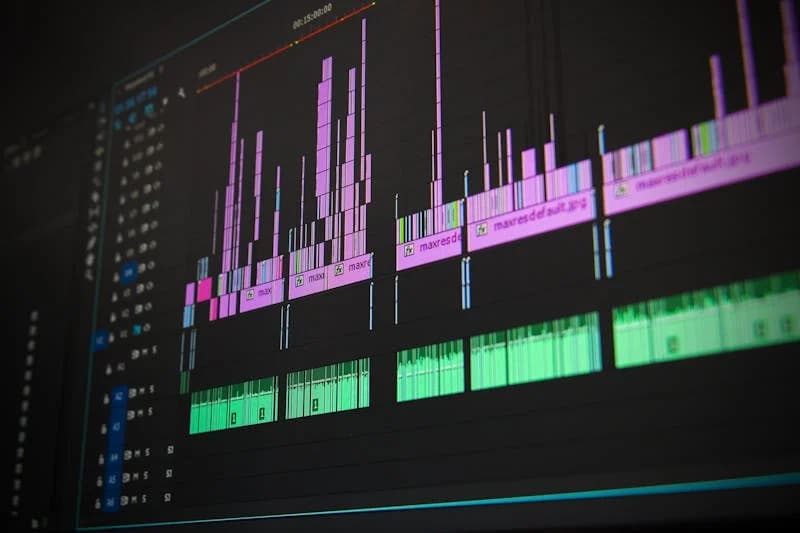Multimedia files have become an integral part of our everyday lives. They are used in a variety of areas: from entertainment to education and business. In this article, we’re going to look at the basics of working with the three main types of multimedia files: sound, video, and images. We will also touch upon the issue of online security, in particular when working with new online casinos.
Sound
Audio files are used in different formats, such as MP3, WAV, AAC, etc. Each of these formats has its own peculiarities. For example, MP3 is a popular format due to its ability to preserve sound quality with a smaller file size. WAV, on the other hand, provides high quality but takes up more space on your disc.
Audio editing basics
You can use different programs to work with audio files, such as Audacity or Adobe Audition. They allow you to record, edit, and mix sounds, as well as add various effects. The main actions you can perform with audio files are:
- Recording: Use a microphone to record your voice or other sounds.
- Edit: You can cut, copy, paste, and reorder audio clips.
- Export: After editing the sound, you need to save it in the desired format for later use.
Video.
Video files also come in a variety of formats, including MP4, AVI, MOV, and others. MP4 is one of the most commonly used formats due to its versatility and support for various devices.
Audio editing basics
Audio editing is an important part of working with multimedia files. There are many programs available for this purpose, with Audacity and Adobe Audition being the most popular. Both of these platforms provide powerful tools for working with audio files, allowing you not only to record audio but also to perform various manipulations with it.
Recording audio
The first step in working with an audio file is to record it. Using a microphone, you can record your voice or other sounds you need. Many applications allow you to adjust the recording quality by choosing the sample rate and bit rate, which will affect the final sound quality.
Edit the sound
After recording your audio, the next step is to edit it. You can perform the following actions during the editing process:
- Cut: Get rid of unwanted parts to make your recording sound clean and professional.
- Copy and paste: Allows you to reuse parts of your audio, which can be useful for creating sound effects or correcting mistakes.
- Change the order of audio parts: You can change the sequence of audio parts, which is especially useful when creating music tracks or podcasts.
Add effects
You can also add a variety of effects to enhance the sound. For example, you can apply reverb, EQ, compressor, or filters to add more depth or volume to your audio. This can make your audio file look more professional and appealing to listeners.
Export audio
When you’re done editing, it’s important to export your audio file properly. Most applications allow you to save audio in different formats, such as MP3, WAV, or AAC. The format you choose depends on your needs – for example, MP3 is usually the most suitable format for online use because of its compact size and good sound quality.
Audio editing is an important step in creating high-quality multimedia content, and knowing the basic functions of the software will help you to realise your creative ideas at the right level.
Images.
Images are an important part of multimedia files. Image formats, such as JPEG, PNG, and GIF, have their own peculiarities. JPEG is the most common format for photos because it provides high quality in a smaller size. PNG is used for images with transparent backgrounds, and GIF is used for animations.
The basics of image editing
Software programs such as Adobe Photoshop, GIMP, or Canva are widely used for image editing. Here are the basic steps you can take with images:
- Colour correction: You can change the brightness, contrast, and saturation.
- Crop: This allows you to remove unwanted parts of the image.
- Save: After editing the image, save it in the format you want.

Stay safe when working with media files
When working with media files, it’s important to pay attention to security. Downloading files from unreliable sources can lead to virus attacks or identity theft. For example, the Legjobb Kaszino website provides useful information about safe online casinos where you can enjoy entertainment without worrying about your safety. Here you will find information on registration, top games and other useful tips for players.
Online casino review: what to look for?
Today, there are many new online casinos on the market that attract players with various bonuses and promotions. One of the features of modern casinos is the ability to register via SMS casino, which makes the process even more convenient. However, before making your choice and registering, it is important to carefully check the casino’s licence and read the reviews of other users. Using reliable resources, such as Legjobbkaszino.hu, allows you to get up-to-date information and avoid potential problems. This will help you choose a safe and profitable casino to play at.
Conclusion.
Multimedia files such as sound, video, and images play an important role in modern life. Proper use and editing of these files can significantly improve the quality of your content. However, don’t forget about security when working with multimedia files, especially on the Internet. Remember that it is important to choose only trusted sources of information to avoid problems.

